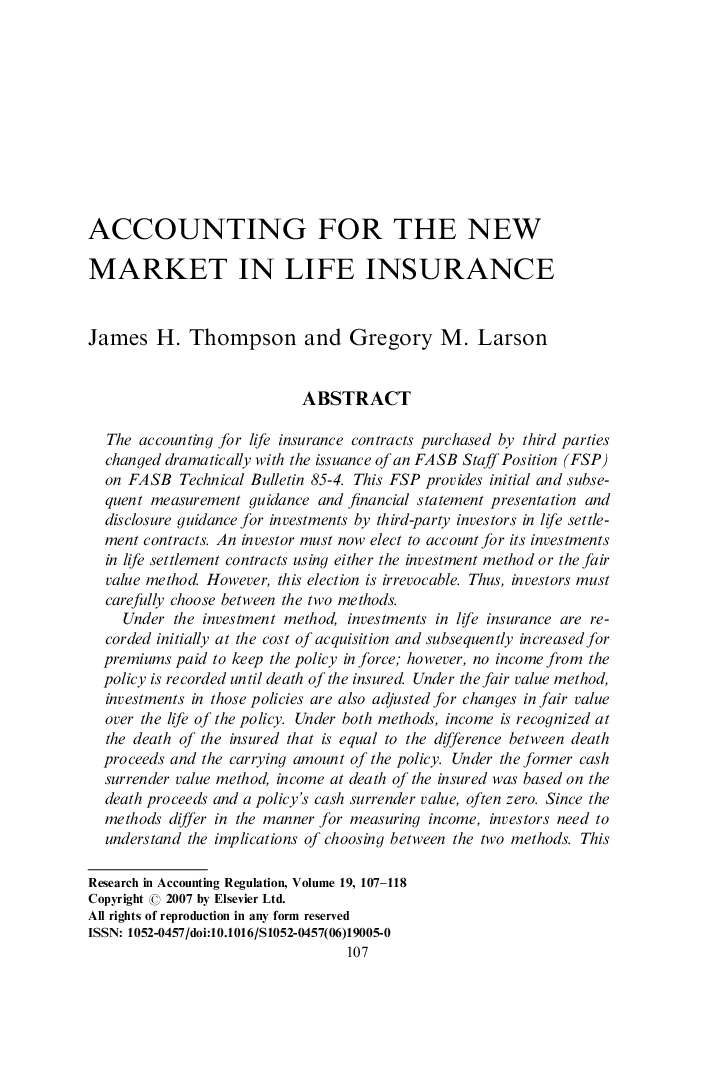| Article ID | Journal | Published Year | Pages | File Type |
|---|---|---|---|---|
| 1006761 | Research in Accounting Regulation | 2007 | 12 Pages |
The accounting for life insurance contracts purchased by third parties changed dramatically with the issuance of an FASB Staff Position (FSP) on FASB Technical Bulletin 85-4. This FSP provides initial and subsequent measurement guidance and financial statement presentation and disclosure guidance for investments by third-party investors in life settlement contracts. An investor must now elect to account for its investments in life settlement contracts using either the investment method or the fair value method. However, this election is irrevocable. Thus, investors must carefully choose between the two methods.Under the investment method, investments in life insurance are recorded initially at the cost of acquisition and subsequently increased for premiums paid to keep the policy in force; however, no income from the policy is recorded until death of the insured. Under the fair value method, investments in those policies are also adjusted for changes in fair value over the life of the policy. Under both methods, income is recognized at the death of the insured that is equal to the difference between death proceeds and the carrying amount of the policy. Under the former cash surrender value method, income at death of the insured was based on the death proceeds and a policy's cash surrender value, often zero. Since the methods differ in the manner for measuring income, investors need to understand the implications of choosing between the two methods. This paper presents empirical evidence that should aid an enterprise in making the appropriate election.
